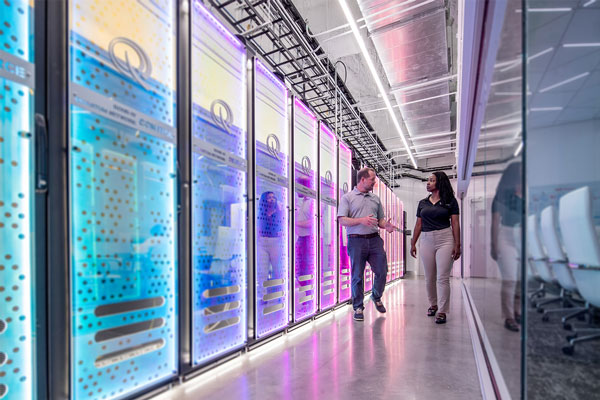
EPB Quantum grew out of the real-world operational expertise of one of the most innovative energy and connectivity companies in the U.S.
In 2010, EPB of Chattanooga surprised the experts by launching America’s first community-wide Gig-speed internet service and followed up two years later by harnessing its fiber-to-the-home network to establish the nation’s most advanced and highly automated power grid.
By becoming the nexus for merging energy and communications technologies, EPB transformed its infrastructure into a platform for developing future innovations. As a result, EPB has played a key role in more than $125 million in national research.

Among the dozens of national research efforts in which EPB has provided a proving ground, the most significant was a R&D 100 Award-winning quantum key distribution (QKD) project that began in 2016. While utilizing fiber optic loops between its substations to serve as a testbed for QKD, EPB gained quantum technology experience and set a course to take on a larger role in the emerging industry.
With the launch of EPB Quantum NetworkⓇ (2023) and EPB Quantum Computing℠ (coming in early 2026), EPB Quantum offers the most comprehensive, commercially-available quantum technology platform in the U.S.
With more than a decade of experience in quantum development, EPB Quantum empowers you to test, prove and scale quantum technologies in a real-world environment—accelerating the path from concept to commercialization.

“With the growing global focus on the potential for quantum technologies to solve problems that would require decades of conventional computer processing, both U.S. companies and the federal government are investing billions of dollars in this emerging sector. EPB Quantum gives Chattanooga the opportunity to attract new investment while accelerating breakthroughs that could make a real difference for our community and the nation as a whole.”
Quantum technology is set to revolutionize industry sectors across the globe with groundbreaking advances in computing, networking and sensing that will transform how we solve some of the world’s most complex problems. At the heart of quantum innovations is the ability to harness the unique properties of quantum particles—unlocking possibilities that traditional technologies simply cannot match.

The potential of quantum technology is too vast to ignore—from computing power that can solve problems too complex for today’s systems, to ultra-secure quantum networks and precision sensing for industries like healthcare, energy and manufacturing. By tapping into quantum principles, we can build faster, more secure systems, optimize industries and drive unparalleled efficiency.
Chattanooga is already a hub for industries poised to benefit from quantum advancements—automotive manufacturing, logistics, energy storage and insurance. According to the McKinsey Digital Quantum Technology Monitor, early adoption of quantum technologies could generate $1 to $2 trillion in global economic value within the next 5 to 10 years, making now the perfect time to invest in this emerging field.
EPB Quantum is where research meets real-world application. By fostering innovation, training the next generation of quantum scientists, and collaborating with leading industries, we’re positioning Chattanooga as a key player in this transformative technology.
Schedule your tour and get pricing information today. Submit your request below or contact Kirk McLemore at 423-648-3375.